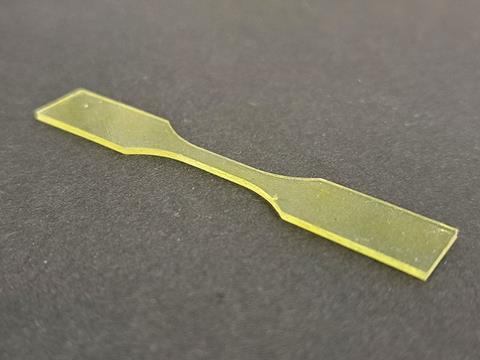
Chemists at the University of Liège are using CO2 as a chemical source to produce new polyurethane in the hopes of developing more easily recyclable plastics.
Carried out alongside the University of Mons and the University of the Basque Country, the study has been published in the Journal of the American Chemical Society. It aims to facilitate the production of ‘truly sustainable’ plastics.
An estimated 460 million tons of commodity plastics were used globally in 2019, with Christophe Detrembleur, FNRS research director at the Center for Education and Research on Macromolecules (CERM), commenting: “This number is staggering, but not surprising, because plastics, also known as synthetic polymers, have met a large success thanks to their irreplaceable characteristics: they are light, cheap and incredibly versatile. However, the fact that they are difficult to recycle, or even impossible to recycle in the case of thermosets, has serious consequences.”
In response, the researchers aimed to produce an easily recyclable plastic that could prevent the depletion of fossil resources and the build-up of waste in the environment and oceans.
“The special feature of this approach is the use of carbon dioxide (CO2) – a major emblematic waste of our society – as a raw material for the production of the building blocks, or monomers, needed to manufacture these new products,” explains Thomas Habets, a doctoral student at CERM and first author of the article. “The structure of the monomers can be easily modified, making it possible to produce plastics with a wide range of properties, from highly malleable elastomers such as silicones to more rigid materials such as polystyrene.”
Instead of a long, linear chain, these plastics have a structure that ‘resembles a three-dimensional network’. Most substances with these structures, such as thermosets, are highly resistant and traditionally difficult to recycle. However, the new polyurethanes feature ‘dynamic’ chemical bonds that can be reshaped under ‘relatively mild’ reaction conditions.
Habets continues: “These new plastics can be recycled in multiple ways, either by simply reshaping them by heating them, or by mixing different types of plastic to create hybrid materials with new properties, or by breaking them down into their constituent monomers, which is ideal for eliminating additives such as dyes or recycling composites.”
The study intends to prove the viability of utilizing CO2 as a chemical resource and facilitate the industrialization of CO2 valourization in the future. In turn, it is hoped to become a potential solution to replace commodity plastics while providing the same functionality and properties as conventional solutions.
Detrembleur adds: “This is the first initial study using our new building blocks and plastics, but it is quite remarkable to see that our materials can already reach properties similar to those of some conventional petro-sourced plastics.”
Last year, a partnership between Econic Technologies and independent Chinese polyol and polyurethanes company Changhua Chemical Technology Company Ltd. sought out a similar goal, hoping to use waste CO2 to create new polyurethane products.
Similarly, VTT’s Forest CUMP project harnessed captured CO2 from waste incineration and the forest industry to produce polyethylene and polypropylene. In the future, the process is anticipated to expand into other industries at a commercial scale.
If you liked this article, you might also enjoy:
The L’Oréal approach to packaging sustainability
The way we talk about plastic needs to change – here’s how to get it right
What steps is Apple taking to make its packaging more sustainable?











No comments yet